Seven Questions Over Breakfast with Barbara Lehman
 September 12th, 2011 by jules
September 12th, 2011 by jules
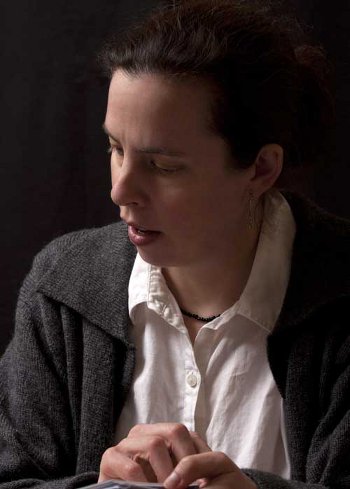 If you look at some of the comments that have been made by professional reviewers about Barbara Lehman’s latest picture book, The Secret Box (Houghton Mifflin, March 2011), you will see that they accurately reflect her career as a picture book author/illustrator on the whole. “A provocative example of the complexity that can be conveyed using only pictures,” wrote Publishers Weekly about the book. “Lehman’s clean-lined, highly-detailed artwork creates an ingenious visual puzzle that invites repeated viewings and flights of imagination,” adds Booklist.
If you look at some of the comments that have been made by professional reviewers about Barbara Lehman’s latest picture book, The Secret Box (Houghton Mifflin, March 2011), you will see that they accurately reflect her career as a picture book author/illustrator on the whole. “A provocative example of the complexity that can be conveyed using only pictures,” wrote Publishers Weekly about the book. “Lehman’s clean-lined, highly-detailed artwork creates an ingenious visual puzzle that invites repeated viewings and flights of imagination,” adds Booklist.
Yes, the same can be said for all of Lehman’s wordless picture books — enigmatic visual puzzles and conceptually sophisticated adventure stories, rich in magic and discovery. The 2005 Caldecott committee acknowledged the skill that goes into Lehman’s work with a Caldecott Honor that year for The Red Book (Houghton Mifflin).
In this latest flight-of-fancy—The Secret Box, another richly-layered, unpredictable wordless adventure tale—she celebrates imagination and friendship with visually striking cartoon art. In this story, a young boy from long ago hides a box of treasures under a floorboard. Years later, that building is a school, and a trio of boys finds the box, following the map inside to a surprise destination, one filled with children from many points along the timeline. Readers see the adventure will repeat itself for future children, thanks to the magic box. As I’ve already noted in one of my April Kirkus columns, which includes this title, Lehman leaves room for the child reader to piece out the story puzzle in many directions, something I always like to see in picture books.
“This book is inspired by many things,” Lehman writes at her site, “from reading about how there are still streams in New York City, though now underground — to an old box I was once given filled with a neighbor’s boyhood treasures from the early 1900s.”
It’s a real pleasure to be having cyber-breakfast with Barbara this morning. “In practice,” she tells me, “I tend to have something simple like yogurt or cereal or bread. Or, when available, cold pizza. (Yes, I am one of those people.) On special occasions, my local eatery breakfast: french toast, coffee with supernaturally thick cream, home fries with hot sauce, and their amazing home-made sausage.”
Coffee with supernaturally thick cream? A visitor after my own heart! I’m getting the mugs out now and setting the table for breakfast, while she gives us the basics. I thank her for visiting 7-Imp this morning.
Jules: Are you an illustrator or author/illustrator?
Barbara: Technically, I am an author/illustrator. But since I make wordless books, the author part often tends to require explanation, though I heard one of my little neighbors say to another kid, “Barbara doesn’t write books, she draws books,” which sums it up better then I could.
Jules: Can you list your books-to-date?
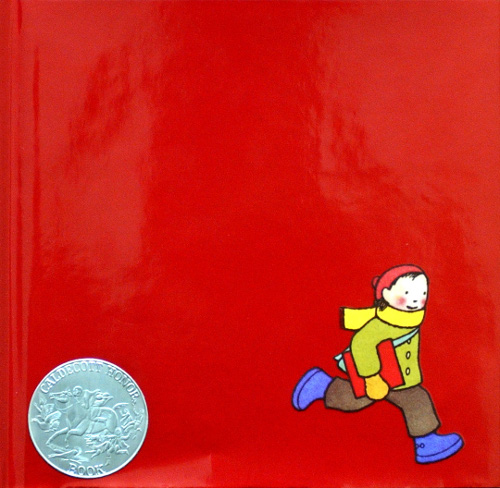
Barbara:
(Click to enlarge)
Jules: What is your usual medium, or––if you use a variety—your preferred one?
Barbara: Ink on watercolor paper — with watercolor paints, as well as some gouache when I need something opaque, like for lettering on a building or sign, etc. Or snowflakes…
{Ed. Note: Images below here are from The Secret Box.}
Jules: If you have illustrated for various age ranges (such as, both picture books and early reader books OR, say, picture books and chapter books), can you briefly discuss the differences, if any, in illustrating for one age group to another?
Barbara: With picture-book age kids, I feel like the visuals are taken more literally, because there is far less of the built-up store of associations and subsequent expectations from visual cues. This means they can also tend to read visuals faster and more efficiently than adults, which never fails to fascinate me.
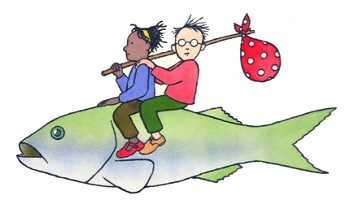 Another aspect of life-experience differences is that I get a lot of questions from kids about whether things in my books happened to me. This is charming and poignant and heartbreaking all at the same time: they haven’t formed a clear sense of the limitations of our human existence yet.
Another aspect of life-experience differences is that I get a lot of questions from kids about whether things in my books happened to me. This is charming and poignant and heartbreaking all at the same time: they haven’t formed a clear sense of the limitations of our human existence yet.
I really do like making things for people who are still within that ephemeral window of much wider range of what is possible: they are still open to believe that the impossible might still be possible, and at the same time, old enough to be real conceptual thinkers.
Jules: Where are your stompin’ grounds?
Barbara: I live in a small village near Hudson, NY, about 100 miles north of NYC in the Hudson Valley.

Jules: Can you briefly tell me about your road to publication?
Barbara: I got my first book job when I was around 25. It was an alphabet book. This was in the 1980s, so my road to publication was very old school: I looked at picture books in libraries and would write down the publishers’ names of the books I liked. Then I would look them up in the phone book and call to make arrangements to bring my portfolio around. I lived in Brooklyn at the time and would travel to Manhattan to use the white pages in the library in order to get the phone numbers. I didn’t realize you could get phone books for other areas besides your own!
Compared to all this, the internet is like being at Hogwarts.
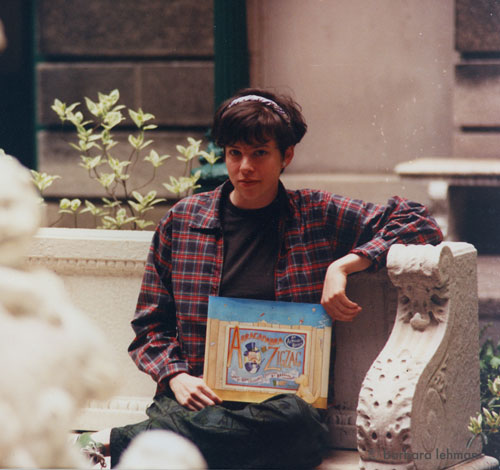
Jules: Can you please point readers to your web site and/or blog?
Barbara: barbaralehmanbooks.com.
Jules: If you do school visits, tell me what they’re like.
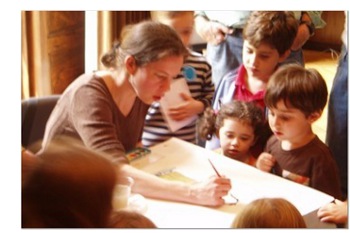 Barbara (pictured right, demonstrating watercolor during a talk for children at the Whitney Museum of American Art in 2006): Because my books are wordless, I have the kids read the pictures out loud, which is a treat for me. And I bring in lots of stuff about the book process, as well as bringing in comics and books I made as a kid.
Barbara (pictured right, demonstrating watercolor during a talk for children at the Whitney Museum of American Art in 2006): Because my books are wordless, I have the kids read the pictures out loud, which is a treat for me. And I bring in lots of stuff about the book process, as well as bringing in comics and books I made as a kid.
I go out of my way to show things like outtakes and mistakes, because I think many children eventually give up on pursuing things they actually really enjoy, because they tend to end up with the mistaken idea that being “good” at something means it happens easily. Being a professional artist doesn’t mean we don’t make plenty of mistakes at the same time. I think that is important for kids to see: that an overriding perseverance is just as important as developing a talent.
Jules: Any new titles/projects you might be working on now that you can tell me about?
Barbara: My superstitions about works-in-progess prevent me from doing this!

 Coffee’s ready, and the table’s set now for seven questions over breakfast. Let’s get a bit more detailed, and I thank Barbara again for visiting 7-Imp.
Coffee’s ready, and the table’s set now for seven questions over breakfast. Let’s get a bit more detailed, and I thank Barbara again for visiting 7-Imp.
1. Jules: What exactly is your process when you are illustrating a book? You can start wherever you’d like when answering: getting initial ideas, starting to illustrate, or even what it’s like under deadline, etc. Do you outline a great deal of the book before you illustrate or just let your muse lead you on and see where you end up?
Barbara: {Ed. Note: Barbara is answering this with a series of images from The Secret Box when it was a work-in-progress. This makes me very happy, but I digress. You can click each image to enlarge and see more closely.}
And it turns into a book idea, as I work on it.”
I do dozens of these and often cut them up and rearrange images.”
I make extensive notes for all the colors.”
I end up with one of these for each book I do.”
(second image is of spread for 1930s and last image for 1960s)
which helps me to maintain continuity.”
2. Jules: Describe your studio or usual work space.
Barbara:
(Click each image to enlarge)
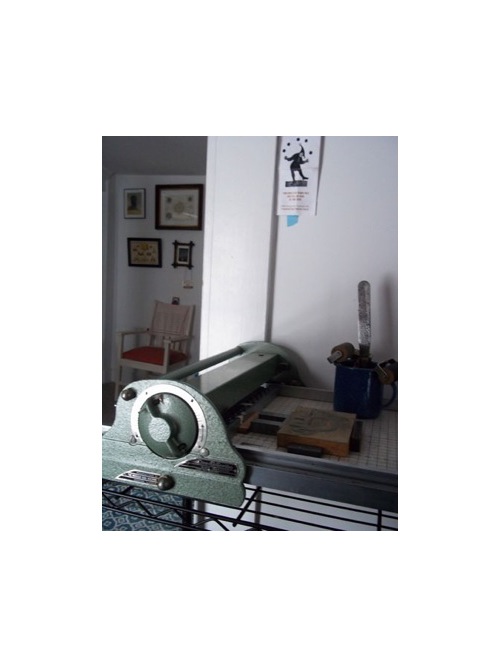
3. Jules: As a book lover, it interests me: What books or authors and/or illustrators influenced you as an early reader?
Barbara: I loved many books for many different reasons, but I especially still remember the moment that Harold and the Purple Crayon blew my little mind.
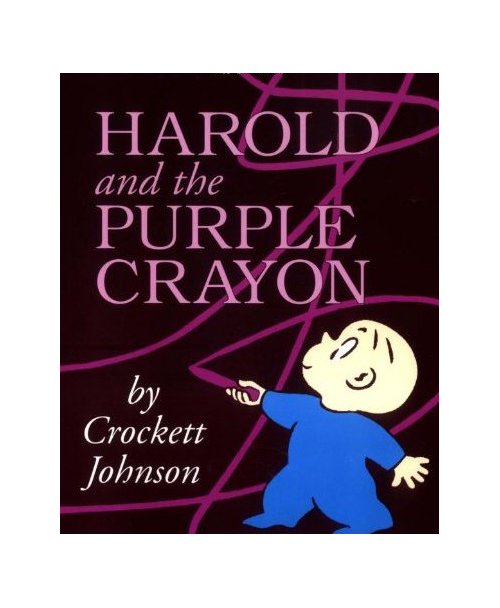
4. Jules: If you could have three (living) authors or illustrators—whom you have not yet met—over for coffee or a glass of rich, red wine, whom would you choose?
Barbara: I’ll take coffee, wine, Hiyao Miyazaki, D. M. Cornish, and Shaun Tan. Or maybe Philip Pullman. Or Lewis Carroll via time machine. And then he could pick up George Herriman on the way, along with Winsor McCay.
a.jpg)
5. Jules: What is currently in rotation on your iPod or loaded in your CD player? Do you listen to music while you create books?
Barbara: Currently being overplayed is: Laura Marling, The Be Good Tanyas, Sigur Rós , Great Lake Swimmers, and Penguin Cafe Orchestra. That is as long as I am not replaying Blood on the Tracks again.
I also listen to the archives of This American Life and to audiobooks while I work.
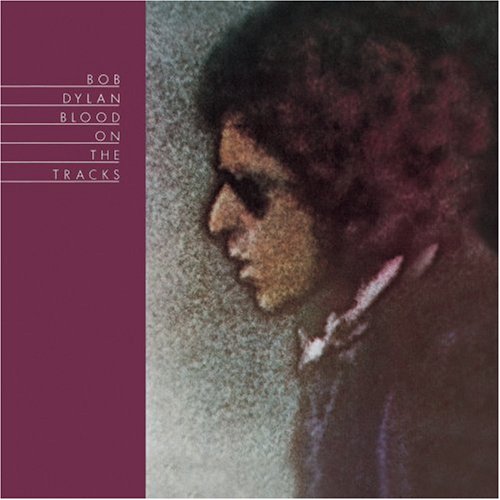
6. Jules: What’s one thing that most people don’t know about you?
Barbara: One of my great grandfathers was named Benjamin Franklin [Lehman]. He was a housepainter in Chicago.

7. Jules: Is there something you wish interviewers would ask you — but never do? Feel free to ask and respond here.
Barbara: Well, I actually often do get very interesting questions from interviewers. I especially like the ones that really surprise me and make me think about my work in a different way in order to answer.

Jules: What is your favorite word?
Barbara: Besides “butter”? Okay: “pizza.”
Jules: What is your least favorite word?
Barbara: I’d say “lugubrious,” except that it sort of makes me laugh, too, so it ends up being a bit of a favorite, too.
Jules: What turns you on creatively, spiritually or emotionally?
Barbara: When you are doing something unremarkable and suddenly feel a sudden and heightened sense of being alive. Like, while just sitting on a wall and talking to a friend, or coming in from the rain and shaking your umbrella, or putting water on the stove to make a pot of tea. And suddenly life feels astonishing. As if we sort of just mindlessly realize every now and then that we are on a spinning planet hurling through space, and it has HOT TEA and UMBRELLAS and FRIENDS, and it seems so absurdly, improbably and ridiculously fortunate.
Jules: What turns you off?
Barbara: Whining (especially from adults).
Jules: What is your favorite curse word? (optional)
Barbara: I seem to like them all — in freestyle combinations.
Jules: What sound or noise do you love?
Barbara: Huge groups of spring peepers! (You can hear them on Wikipedia or YouTube. They sound like aliens in amphibian form, or how maybe how lightning bugs would sound if they made noise and were amplified.)
Jules: What sound or noise do you hate?
Barbara: Car alarms.
Jules: What profession other than your own would you like to attempt?
Barbara: Subway driver and beekeeper (not simultaneously).
Jules: What profession would you not like to do?
Barbara: It would be best for everyone if I never had a job involving singing.
Jules: If Heaven exists, what would you like to hear God say when you arrive at the Pearly Gates?
Barbara: If such a scenario were to exist, it might well be something along the lines of: “Congratulations! You’ve won today’s wild card spot!”
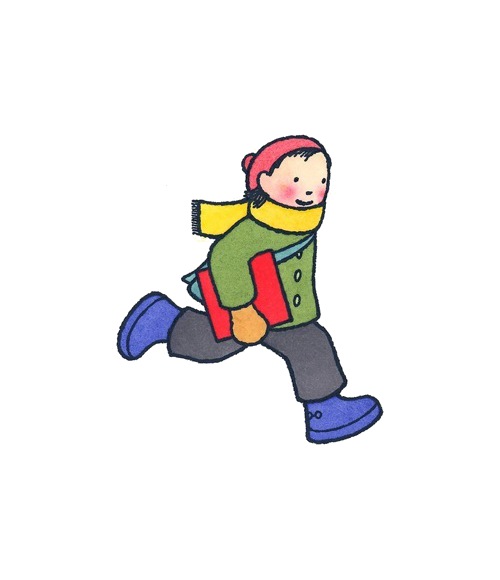
All artwork and images used with permission of Barbara Lehman. All rights reserved.
THE SECRET BOX. Copyright © by 2011 by Barbara Lehman. Reproduced by permission of the publisher, Houghton Mifflin, Boston, MA.
The spiffy and slightly sinister gentleman introducing the Pivot Questionnaire is Alfred, © 2009 Matt Phelan.
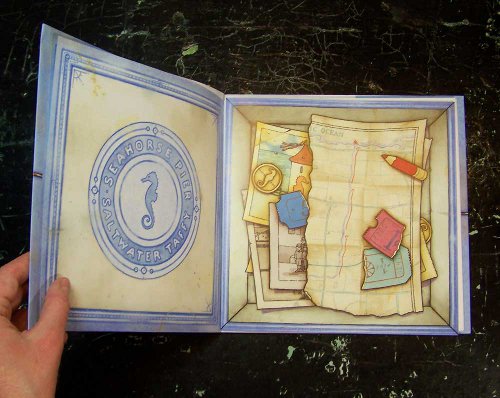
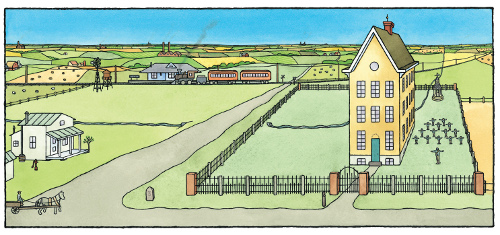
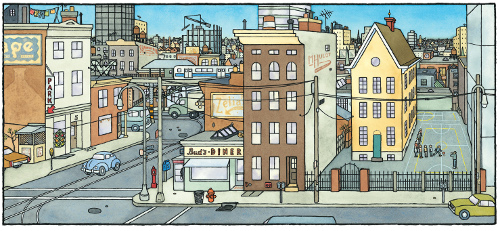
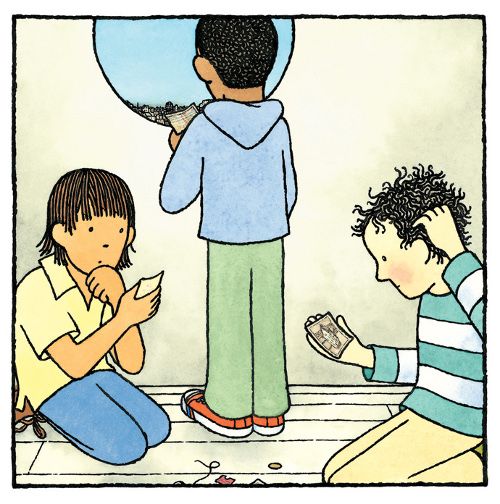
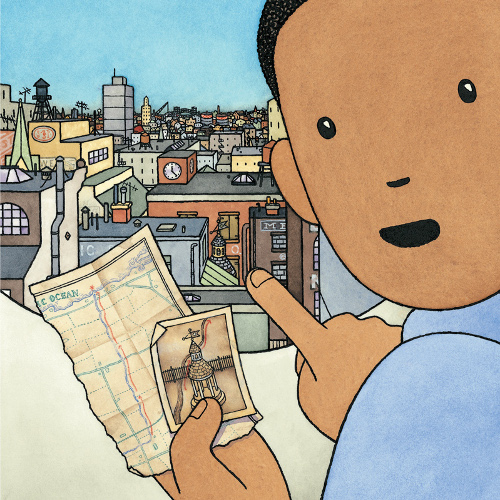
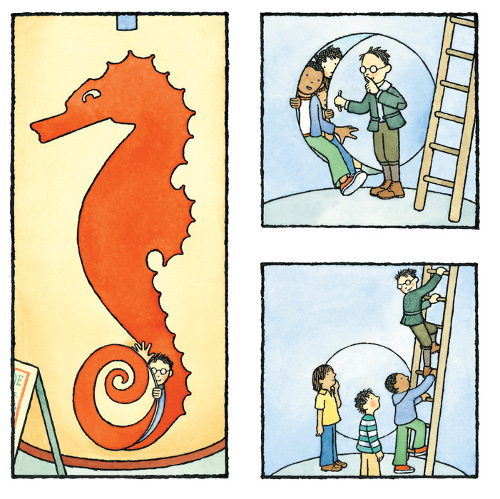

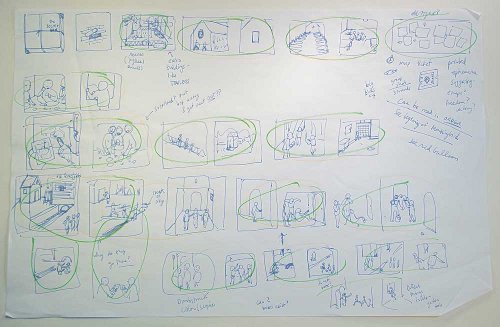
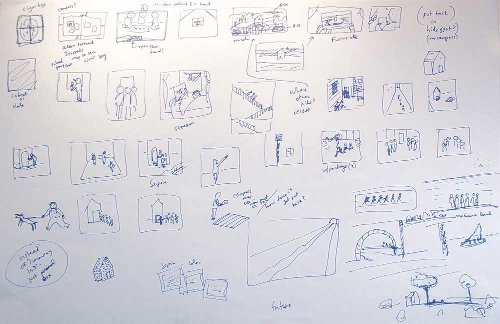
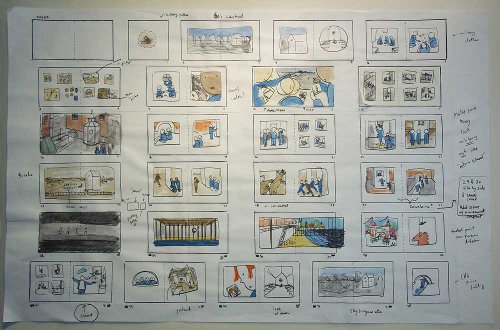
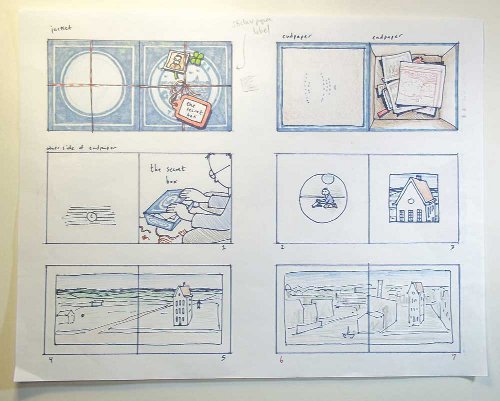
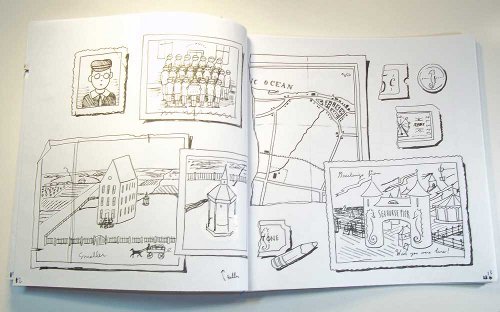

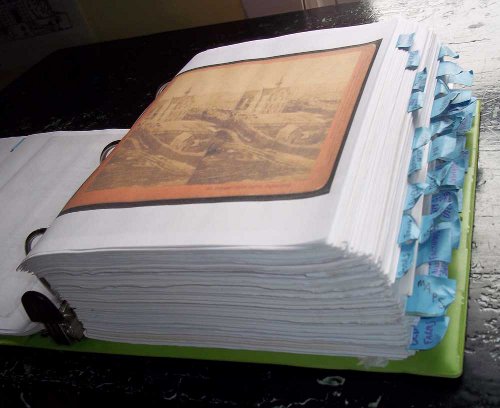
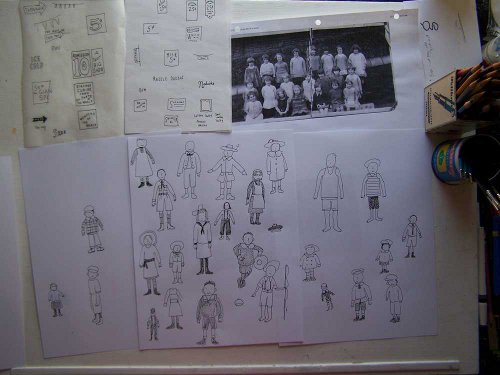

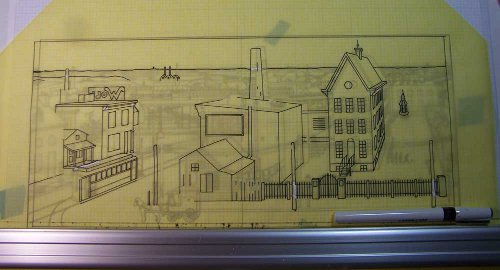
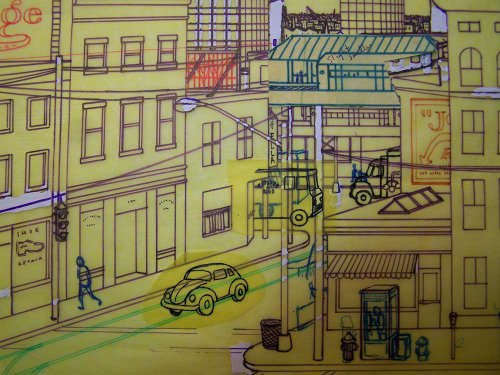
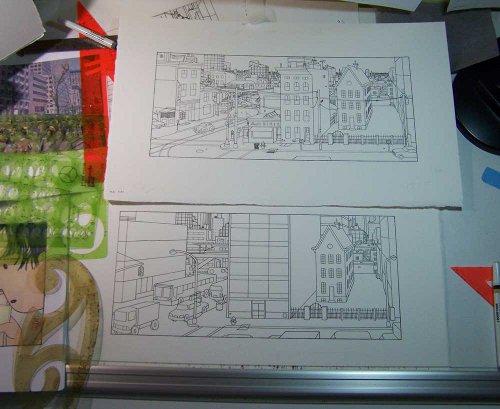
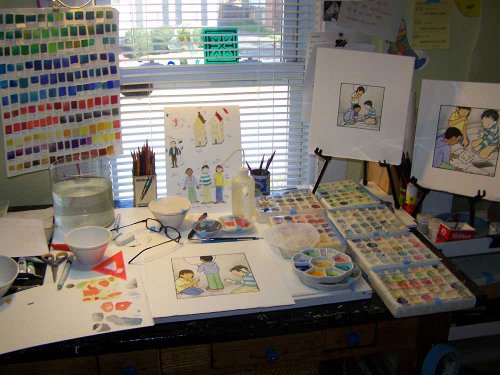
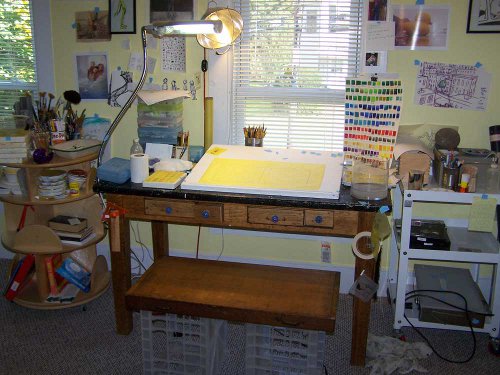


Happy, happy happy! That’s what this interview makes me feel like. Thankyou Jules, Thankyou Barbara. Ms Lehman’s books aren’t so well known over here in the UK but I’m making it one of my missions in life to educate the British Public about them 🙂
If anyone can do it, Zoe, you can!
Love Barbara Lehman’s work, loved this interview, loved the fact that Harold and the Purple Crayon was a childhood favorite of hers. Did not know about Abracadabra to Zigzag, which (of course) I now must seek!
Yay — my favorite type of 7-Imp post! (A lively interviewee with an interesting, wide-ranging mind, and a matter-of-fact way of describing the birth of miracles. Plus copious GIANT illustrations.)
Favorite bits: (1) In the photo of the Whitney Museum visit, check out how EVERY SINGLE VISIBLE EYEBALL (the artist’s, and the audience’s) is trained on exactly the same point: where the tip of the implement meets the paper. If that doesn’t scream focus, well, I’ve never heard focus screamed. (Uhhhhhh…) (2) The little dishes she uses to hold the different colors of paint. They don’t appear to have been made for that purpose. In fact, they look like deviled-egg plates, with stiff cellophane taped-on covers on which she’s noted the name of each color underneath.
You already do so much for your chosen field, Jules, that I hesitate to bring this up. But if you ever decide to run a charitable campaign or start up a foundation or whatever, I bet you could haul in a fortune auctioning off donated “rough sketches” by the illustrators you feature here, maybe framed and matted. I don’t know if they typically hang onto them, but the ones you feature in all these Seven Questions interviews are like little rough-hewn secret boxes in their own right.
I love this look into Lehman’s art, and that bit about hot tea and umbrellas and friends being “so absurdly, improbably and ridiculously fortunate” kind of blew me away on a Monday morning. It’s a good thing to remember.
THANK YOU THANK YOU SO MUCH for this interview, both of you, and Barbara thank you so much for your fabulous fabulous books! I just discovered Barbara Lehman’s work last year and was so totally blown away (here’s me gushing about it at the time: http://rockinlibrarian.livejournal.com/206987.html) –every book of hers I opened, it was like watching my own dreams come true on paper. I couldn’t figure out how I had never heard of her before and why everyone else in the world wasn’t gushing away like I was, and why I couldn’t find anything else about her (never found that website before– thanks!) . So, anyway, thanks, I’ll stop the fangirling now.
Oh, except I also wanted to say how “As if we sort of just mindlessly realize every now and then that we are on a spinning planet hurling through space, and it has HOT TEA and UMBRELLAS and FRIENDS, and it seems so absurdly, improbably and ridiculously fortunate ” is absolutely the loveliest bit of paragraph I’ve read… at least today, if not this week or so.
John, there you go again, being one of my favorite and most observant commenters. (I think bloggers dream of readers like you who really *see* things, though I know I’m making you blush.) Neat idea about the sketches. I *have* always wanted to learn how to do my own framing and matting (sp?) one day.
John and Adrienne and “rockinlibrarian”: I am also quite fond of her matter-of-fact way of describing miracles (as you put it, John). So much so that I’ve been spreading her answer to the what-turns-you-on question around to friends.
Phil, I’d like to see that book, too. I’ll have to go diggin’ myself.
Wow. Really enjoyed this so much!
Especially, “This is charming and poignant and heartbreaking all at the same time: they haven’t formed a clear sense of the limitations of our human existence yet.”
I also love the part about how kids “tend to end up with the mistaken idea that being “good” at something means it happens easily. Being a professional artist doesn’t mean we don’t make plenty of mistakes at the same time. I think that is important for kids to see: that an overriding perseverance is just as important as developing a talent.”
And what a beautiful, glowing picture of her childhood self!
Thank you so much for sharing this!
Where do I begin? Flat out LOVE Barbara’s style.
Love that she loves all the curse words in freestyle combinations, and that her fave word is butter. Also that her first published book was an alphabet book (and look at that WONDERFUL red letter A ladder)!
All the Secret Box illustrations are sublime, not to mention the dish and spoon. Also something about those dots for eyes that hit me just right.
Thanks to both of you; must go listen to Blood on the Tracks! Yay for the big Dylan album cover, Jules! You’re the best :).
What a lovely way it was to start a new week. I have admired Barbara’s work from the get-go and find that I ‘read’ her books over and over again. Imagine seeing them from a child’s perspective for the first time! The unremarkable is really so remarkable when we take the time to truly think about it…I love friends, tea and feel eternally grateful for time spent with both. Thanks so much for your work, Barbara and Jules.
Thanks, you all. I love how generous Barbara was in this interview — with her thoughtful responses and lots of images.
(Jama, Dylan covers are always for you.)
I love Barbara’s sense of humor & understated approach. I had the pleasure of working with her on SAY BOO! eons ago & still love the profound simplicity of that work. It makes perfect sense to me that she was influenced by Harold & the Purple Crayon…her work takes you on a journey in such purely delightful & unexpected ways.
Fascinating interview and art work! Such amazing drawings. Thanks .
[…] Barbara Lehman (September 12, 2011): “I got my first book job when I was around 25. It was an alphabet book. This was in the […]
[…] answer to “What turns you on creatively, spiritually, or emotionally?” at 7-Imp (click here for the whole […]
[…] as well as Alison Paul’s The Plan (Houghton Mifflin Harcourt, November 2015), illustrated by Barbara Lehman. (Did you know Alison is an illustrator too? Here’s her […]